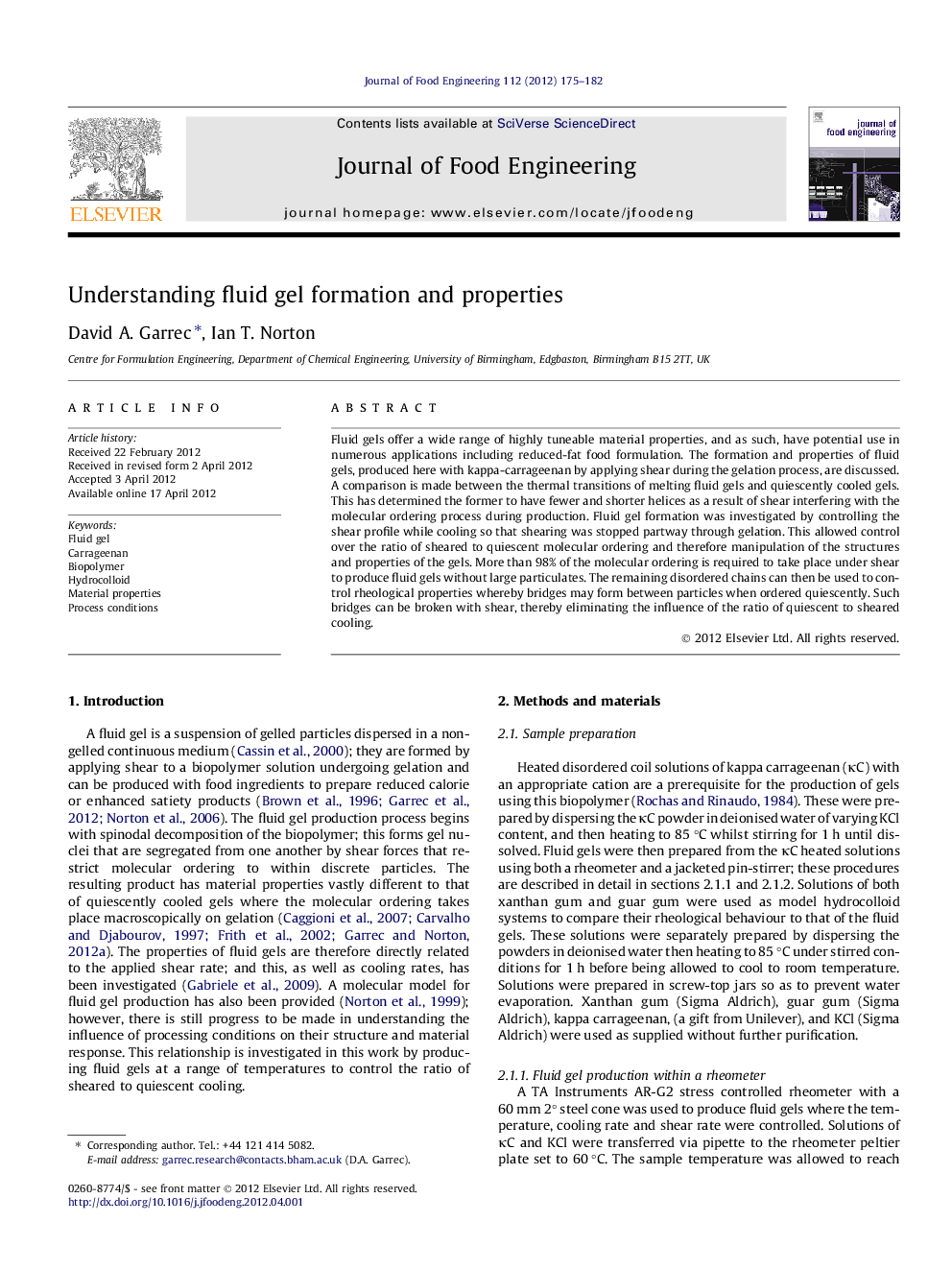| کد مقاله | کد نشریه | سال انتشار | مقاله انگلیسی | نسخه تمام متن |
|---|---|---|---|---|
| 223657 | 464391 | 2012 | 8 صفحه PDF | دانلود رایگان |

Fluid gels offer a wide range of highly tuneable material properties, and as such, have potential use in numerous applications including reduced-fat food formulation. The formation and properties of fluid gels, produced here with kappa-carrageenan by applying shear during the gelation process, are discussed. A comparison is made between the thermal transitions of melting fluid gels and quiescently cooled gels. This has determined the former to have fewer and shorter helices as a result of shear interfering with the molecular ordering process during production. Fluid gel formation was investigated by controlling the shear profile while cooling so that shearing was stopped partway through gelation. This allowed control over the ratio of sheared to quiescent molecular ordering and therefore manipulation of the structures and properties of the gels. More than 98% of the molecular ordering is required to take place under shear to produce fluid gels without large particulates. The remaining disordered chains can then be used to control rheological properties whereby bridges may form between particles when ordered quiescently. Such bridges can be broken with shear, thereby eliminating the influence of the ratio of quiescent to sheared cooling.
► For smooth fluid gels samples, >98% of the molecular ordering must be under shear.
► The applied shear disrupts molecular ordering to form fewer and shorter helices.
► Interparticle bridges can be formed by partial quiescent cooling.
► Interparticle bridges result in increased storage moduli and yield stresses.
► Interparticle bridges are irreversibly broken under shear.
Journal: Journal of Food Engineering - Volume 112, Issue 3, October 2012, Pages 175–182